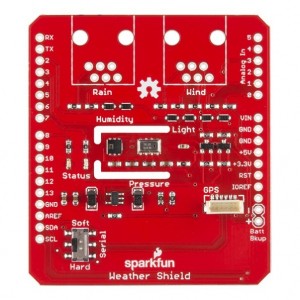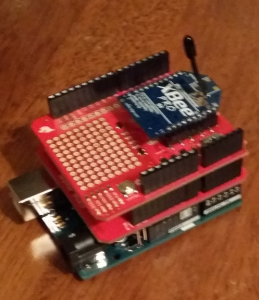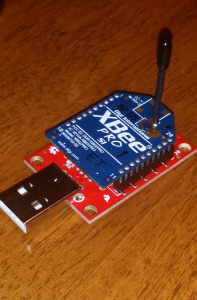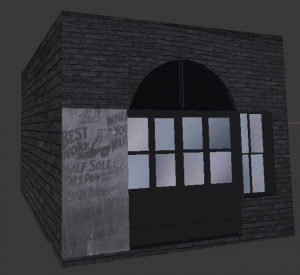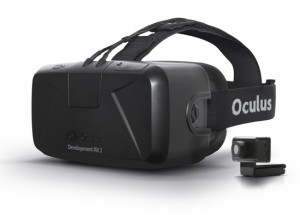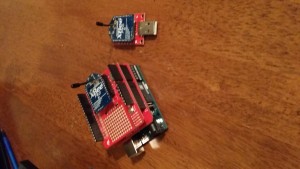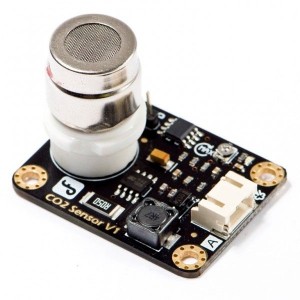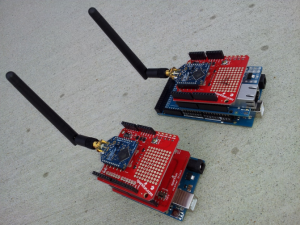Active learning pedagogies has been a main topic in ongoing and recent educational research. By providing students with a more interactive learning environment, we can better engage those students in the topic at hand. One such topic is introductory Geosciences. Therefore, we provided GSUs Department of Geosciences with a more hands-on undergraduate lab assignment for their Climate Literacy Labs. This experiment involves the use of a weather balloon, which will record and transmit real-time atmospheric data as the balloon ascends. The package of the weather balloon is an Arduino based sensory unit that reads the changes in humidity, pressure, temperature and altitude versus time. The recorded data is then wirelessly transmitted to a receiving module using Xbee devices. Students can gain access to the weather related data they helped collect during their labs through an online public website created to house and display the data. The website, managed by site administrators and lab instructors, will allow the students to download the raw data and save graphical representations of the data. More importantly, this project allows for other educational facilities to have free and public access to the weather balloon designs and also allows for easy extendibility for additional hands-on lab assignments in the future.
The weather balloon will incorporate sensors to calculate humidity, pressure, temperature and altitude. These sensors will be located on an Arduino Weather Shield, where the Arduino will be the package of the weather balloon. The Arduino will take data readings every 4-5 seconds as the weather balloon ascends. The program utilizes two main libraries in order to calculate current humidity, pressure, altitude, and temperature values: HTU21D Humidity Sensor Library and MPL3115A2 Barometric Pressure Sensor Library. The Pressure Sensor Library allows the Arduino to read from the Weather Shields MPL3115A2 low-cost high-precision pressure sensor. After switching to the pressure mode, the sensory unit reads the pressure. Subsequently, the sensor is set to the altimeter mode which returns the corresponding weather balloon altitude. The temperature is then measured using the pressure sensor. The Humidity Sensor Library allows an Arduino to read from the Weather Shield HTU21D low-cost high-precision humidity sensor. The sensor reads the current humidity level and returns the value to the Arduino.
Each time the weather measurements are calculated, the values for the humidity, pressure, altitude, and temperature are stored as variables and transmitted through the Xbee modules to be printed on the desktop application in real time. The application offers the user the option to save that data as a text file. If the user has never saved data before, a directory called “Weather Balloon Data” will be made for them. All saved data will be stored in this directory. The application also allows the user to open the Climate Literacy Labs webpage directly – a convenience for the instructor.
The publicly accessible website developed for this project is a simple HTML based web application. The primary goal of the site is to grant the students access to the data they took during their lab assignment. The site also addresses a number of secondary goals, such as allowing public access to the weather related data. This allows for possible research usage of the data. We also sought to allow public access to the documentation and the code used to develop the project. We wanted other educational facilities to have all the information needed to recreate the weather balloon as well as the software needed to process collected data. The website also serves as a hub for future projects to be hosted. It creates an environment where any newly developed hands-on lab assignments can be uploaded and accessed easily.
The documentation and code for this project can be accessed directly from the GitHub link below.
https://github.com/SIFsatGSU/WeatherBalloon.git
The code is made available through GSUs Student Innovation Fellowship GitHub account. The link to the public website will be provided through the GitHub account once the site is made live.
